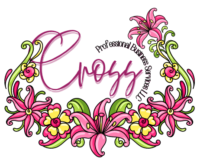Wedding Traditions & Superstitions~
Do you wonder why we carry a bouquet on our wedding day? Why a wedding is not complete without flowers? Here are some of the answers and a guide to the meaning of some flowers.
- Flowers have always been a part of weddings as a way to show love and well wishes for the couple.
- In ancient times couples wore garlands or wreaths of garlic, herbs, and spices instead of flowers to keep away evil spirits.
- In ancient Greece and Rome, the garlands symbolized new life, hope, and fertility.
- The bridal bouquet was inspired by garlands and wreaths worn around the heads of both the groom and bride. The garland was considered a symbol of love and happiness.
- Dill is the herb of lust. When carried with the garlic down the aisle the bride would lust only for her husband.
- Sage is the herb for wisdom. When carried with the garlic it is said that the bride would gather great wisdom and learn goodness.
- Traditional Celtic bouquets included ivy, thistle, and heather.
- In Germany, couples would hold candles with flowers and ribbons tied to them, during the ceremony.
- In India, the groom’s brother sprinkles flower petals over the bride and groom at the end of the wedding ceremony to help ward off any evil spirits.
- In Sweden, the bridesmaids carry little bouquets of aromatic herbs and the groom carries thyme in his pockets as they walk down the aisle to scare off trolls.
- In Austria, the brides would crown their veils with the flowers of life.
- In England, the bride and her bridesmaids walk to the church together. A small girl would lead them to the church while sprinkling flower blossoms along the path so the bride will have a life filled with flowers and happiness. {today’s flower girl}.
- When herbs were still used in weddings, a kissing knot was made with rosemary and roses tied together. The kissing knot was suspended over the heads of the bride and groom at the head table, to bring good luck and lots of love to the couple and everyone sitting at the table.
- Some cultures and religions still intertwine herbs with flowers in order to celebrate their marriage with a gift from nature.
- By the 1800s, the herbs and spices had been replaced by fresh flowers, especially marigolds.
- Edible flowers were still included in the bouquet.
- Small nosegays were placed beside every plate at the reception, to wish the guests happiness and long lives.
- In Victorian times, flowers became the secret messengers of lovers; each flower having its own meaning.
- It is believed that ‘the flower language’ began in Turkey during the seventeenth century. Lovers began using floral exchanges to convey messages.
- These meanings are based on a science known as Floriography, ‘the flower language’. Many flower lovers followed this language as it revealed underlying messages to sending and receiving flowers.
- In modern times, brides pick their flowers on what they like. Flowers that suit their personality, style, and taste.
I originally wrote this on my wedding planning business blog, A Joyeux Blog/November 28, 2008, as part of a series on Traditions and Superstitions.
Until next time…


